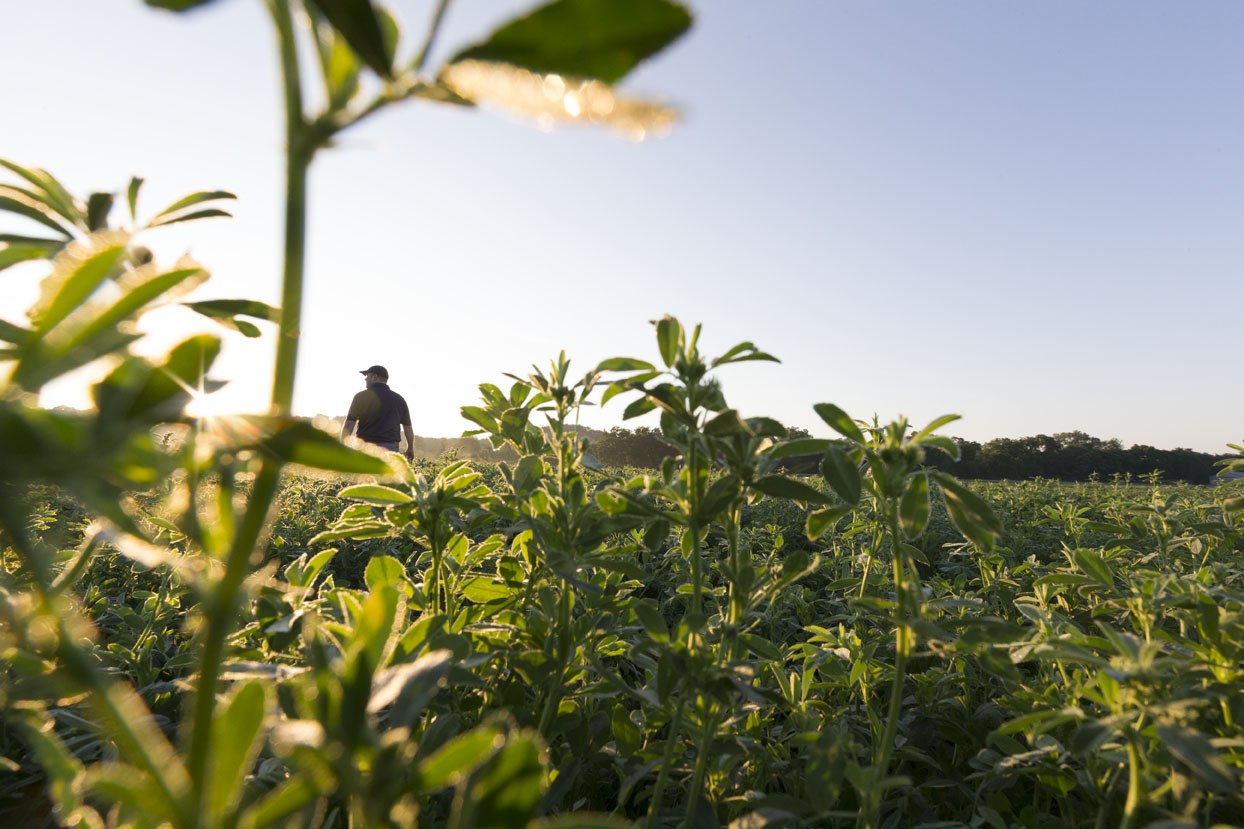Using Tech to Help Farmers Establish Alfalfa

As you work with farmers to plant new alfalfa or manage an existing stand more closely, here’s an overview of how you can use ag tech tools to help set them up for success.
Planning for Success
Once a farmer has identified a field in which he or she would like to plant or more precisely manage alfalfa, it’s important to obtain a better understanding of the field’s characteristics through a few steps.
Choosing the Right Seed When Planting a New Stand
After you have a good understanding of the field and the possible challenges, the next step is to pick the right alfalfa variety for the field. The R7® Tool now has the functionality to take you straight to the CROPLAN® website to select the best variety. Here’s how it works:
Establishing a Strong Stand
Before planting seed or helping a farmer make management decisions about an existing stand, take a soil sample from the field. Refer to the maps and notes you took about the field and determine zones that will benefit from close monitoring through soil sampling throughout the season. Once you get the samples back, work with the farmer to make a fertility plan that addresses issues in the field that will affect the stand throughout the growing season.
To help the farmer get the most out of the alfalfa stand, keep an eye on it using field monitoring and in-season imagery through the R7® Tool. Check the growth charts about twice a week and take a trip out to the field when accelerated growth occurs. If the alfalfa is coming in strong, take tissue samples to spot any nutrient deficiencies. If weeds are noticeable, make a plan with the farmer to control them right away to avoid competition, so the alfalfa seedlings can become high-producing plants.
For more tips on managing alfalfa in-season, click here.
Planning for Success
Once a farmer has identified a field in which he or she would like to plant or more precisely manage alfalfa, it’s important to obtain a better understanding of the field’s characteristics through a few steps.
- Using the R7® Tool, review the yield potential map, which is a spatial representation of an optimal crop output given the environment, adequate nutrients and water, and no plant stress.
- Then, review soil and soil variability maps as well as in-season imagery from past crops.
- Identify the soil types to help inform management practices. Are the soils sand or clay? Is there a large amount of slope in the field?
- Review the soil variability maps. These maps help detect where the lighter and heavier organic matter spots are in the field. For example, in the West, these maps are exceptionally helpful for identifying areas where the farmer may have pH or salt issues due to heavy irrigation. Having a pH out of balance or a salt issue can be detrimental to establishing an alfalfa stand. Recognizing these spots and measuring their size allows you to make a plan to address these challenges.
- Look over the past season’s yield potential maps and in-season imagery for any trends, such as water holding issues, which could include poor drainage or hilltops that dry up fast.
Choosing the Right Seed When Planting a New Stand
After you have a good understanding of the field and the possible challenges, the next step is to pick the right alfalfa variety for the field. The R7® Tool now has the functionality to take you straight to the CROPLAN® website to select the best variety. Here’s how it works:
- Once you’re at croplan.com, click on the alfalfa icon and select Search for seed.
- From there, select your region, what dormancy the farmer will need, and what traits he or she would like. This will then narrow down which alfalfa varieties are best for the conditions.
- Then, you can use the alfalfa variety placement chart to further identify the variety that will work best for the field based on characteristics found through imagery and scouting as outlined above. You can also review variety performance results, including yield and forage quality data.
Establishing a Strong Stand
Before planting seed or helping a farmer make management decisions about an existing stand, take a soil sample from the field. Refer to the maps and notes you took about the field and determine zones that will benefit from close monitoring through soil sampling throughout the season. Once you get the samples back, work with the farmer to make a fertility plan that addresses issues in the field that will affect the stand throughout the growing season.
To help the farmer get the most out of the alfalfa stand, keep an eye on it using field monitoring and in-season imagery through the R7® Tool. Check the growth charts about twice a week and take a trip out to the field when accelerated growth occurs. If the alfalfa is coming in strong, take tissue samples to spot any nutrient deficiencies. If weeds are noticeable, make a plan with the farmer to control them right away to avoid competition, so the alfalfa seedlings can become high-producing plants.
For more tips on managing alfalfa in-season, click here.


